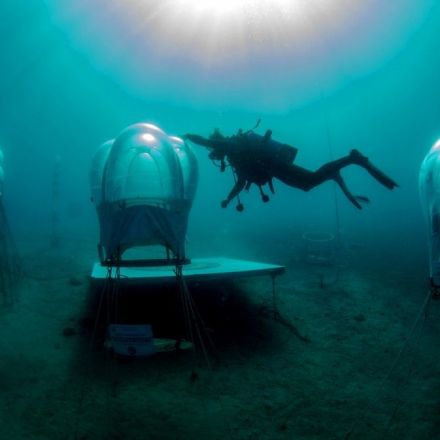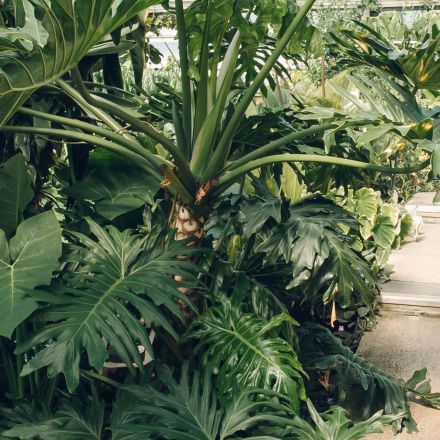

10 years ago
13
The world’s most beautiful greenhouses are underwater, and growing strawberries
The air of the greenhouse stands at 79 degrees with humidity hovering around 83 percent. That's a pretty good environment for a typical plant. But this is no ordinary greenhouse: It's 20 feet under water, anchored to the floor of the sea just off the coast of Noli, Italy. This is Nemo's Garden, an experimental project in its fourth year, operated as part of the family-run Ocean Reef Group.
Continue Reading
Additional Contributions:



























Join the Discussion
How does the carbon dioxide enter the biosphere and how does the oxygen flow off?
This is a pretty technical explanation, but worth the watch if you're interested.. Basically, gasses exchange on the surface of the water. Wind, rain, and other meteorological events can increase the exchange rate. Then aquatic organisms "pull" the carbon dioxide or oxygen into the hydrosphere further through respiration, photosynthesis, and other basic life functions. In reality, more carbon dioxide is absorbed than is released. This phenomenon is causing ocean acidification, one of the consequences of climate change.
That's really interesting. Imagine entire underwater fields of produce!
I heard about them planing on doing this but I never knew they actually did it, this is just amazing.
This is amazing! I love it! It's so beautiful in a way. Underwater farming should be a thing. I'd love to eat one of those strawberries though.
This is fascinating, and I hate to be a downer, but I have so many questions about this.
I am not understanding the benefit of this over land-based indoor growing operations. I presume electric light is required, and maintenance and harvesting will be significantly more difficult and costly.
Even the high levels of CO2 could be replicated in a land-based indoor grow space using sequestered CO2.
I'm a big proponent of permaculture design, aquaponics experimentation, alternative growing methods, and find this experiment incredibly interesting, but not terribly compelling. It feels more like an art piece.
I personally see the future developments in local, automated residential growth systems, decentralization of supply chains, and intentional community design, as being far more pragmatic.
Am I missing something?
I too would be interested to see a cost and environmental analysis of the benefits and drawbacks of this kind of set up. I imagine that using carbon dioxide available in the ocean would be more energy (and perhaps cost) efficient than CO2 treatment in a greenhouse. But I also imagine that there would be substantial costs (and carbon expenditures) related to maintenance and harvesting of these plots. I wonder if those two balance out? I would also be concerned about the environmental impact on the sea floor ecosystem.
Very interesting read! I wonder how feasible it will be able to scale up. However even if it's just supplemental it seems like a great use of the environment!
That's so neat. I'm familiar with the Victorians forcing plants in the dark so that they grow quicker and less bitter than their traditional counterparts, but underwater gardening is like something out of a sci fi novel!
I wonder if it would be affected by weather at all. Undercurrents and all that.
I had no idea this was even possible. Considering how much of Earth is covered with ocean water, this could really be quite useful.
Taking into consideration the speed at which ocean levels are rising, this is good news.
I've always wondered what it's like to be a scubadiver and just dive straight to the bottom to find "other worlds" but I think one must be prepared to do that sort of thing. Don't know why I've always had a weird phobia against submerging myself into the bottom of the ocean. I guess the unknown freaks me the hell out. I mean "20 feet underwater"? That's pretty deep if you ask me.
Impressive! Do you believe that, probably, 10 years ago we couldn't even imagine something like that?